Tiffany lamps are known for their beautifully detailed stained glass shades and intricate bronze bases. However, as with any highly sought-after item, there are many replicas and fakes on the market. If you’re in the market to purchase a Tiffany lamp or if you already own one and want to verify its authenticity, there are a few key things to look for to determine if it is a genuine Tiffany lamp.
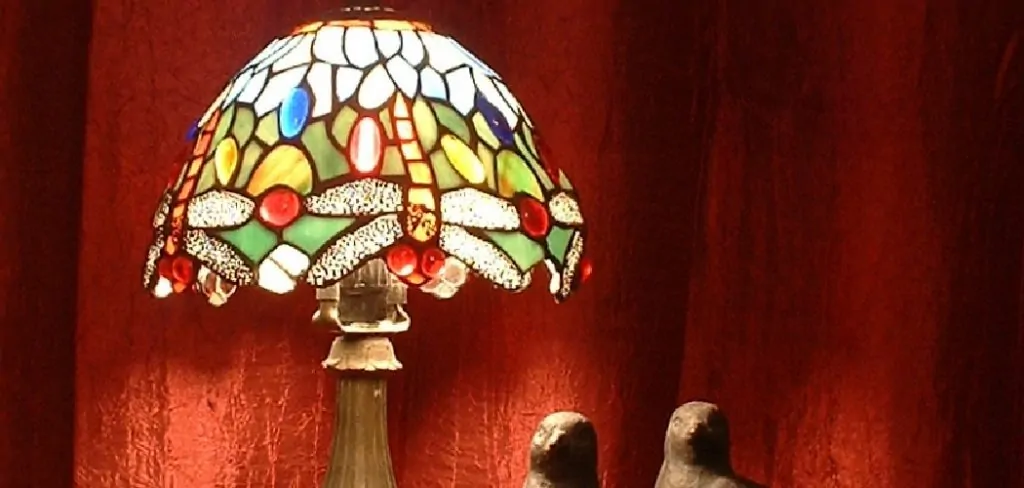
A Tiffany lamp is a type of lamp that Louis Comfort Tiffany designed in the late 19th and early 20th century. These lamps are characterized by their vibrant stained glass shades and intricate designs. However, with the popularity of these lamps, there has been an increase in counterfeit products being sold as authentic Tiffany lamps. In this guide on how to tell a real tiffany lamp, we’ll go over some of the ways to tell a real Tiffany lamp from a fake one.
Necessary Items
To verify the authenticity of a Tiffany lamp, you will need to have a few items on hand. These include:
- A magnifying glass
- A black-light
- Knowledge of Louis Comfort Tiffany’s signature and company markings
8 Things to Know Before You Start
1) Examining the Shade
An authentic Tiffany lampshade will have a mix of colors, not just one uniform color. The lead lines of a genuine Tiffany shade will be very fine and consistent throughout the entire piece. Look for hand-rolled edges on the shades, which are an indicator of high-quality craftsmanship. Additionally, Tiffany lamps are known for their intricate designs and attention to detail, so you should be able to see tiny glass jewels or chips in the shade. If you can’t spot any of these qualities, it is likely a fake.
2) Check the Base
The base of a real Tiffany lamp will have a bronze patina that has developed over time. This is a sign of age and authenticity. If the base looks too new or shiny, it is likely a fake. Additionally, real Tiffany lamps have bases that are made from bronze, not brass or other metals.

3) Look for Imperfections
Real Tiffany lamps were handmade and, therefore will have some imperfections in the glass and overall design. Look for small bubbles or uneven edges in the glass, which is a sign of authentic hand-blown glass.
4) Know What to Look for in the Signature
Louis Comfort Tiffany’s signature can be found on all genuine Tiffany lamps. However, there are different types of signatures depending on when and where the lamp was made. Do some research on the specific style and time period of your lamp to know what type of signature it should have.
5) Familiarize Yourself with Company Markings
Along with the signature, there are usually other markings on a real Tiffany lamp. These can include the company name and logo, as well as the lamp model number or production date. If these markings are missing or seem off, it is likely a fake.
6) Test with a Black Light
A black light can help you spot authentic Tiffany lamps, as the glass will glow in different colors under the light. If the lamp glows white or blue, it is likely a fake. And if the lamp does not glow at all, it is definitely a fake.
7) Ask for Documentation
If you are purchasing a Tiffany lamp from an antique dealer or private seller, ask for any documentation they have on the piece. This can include certificates of authenticity or previous sales records. If the seller cannot provide any form of documentation, be cautious about its authenticity.

8) Consult an Expert
If you are still unsure about the authenticity of your Tiffany lamp, it is best to consult with an expert. There are many antique experts and appraisers who specialize in Tiffany lamps and can help authenticate your piece.
Tiffany lamps are highly sought after and valuable pieces of art that require careful examination to determine their authenticity. By familiarizing yourself with the necessary items, knowing what to look for, and seeking expert advice when needed, you can ensure that you are purchasing or owning a genuine Tiffany lamp. So next time you come across a beautiful Tiffany lamp, you’ll know exactly how to tell if it’s the real deal or not.
12 Steps on How to Tell a Real Tiffany Lamp
Step 1: Gather Necessary Items
Before beginning the authentication process, make sure you have a magnifying glass, black light, and knowledge of Tiffany’s signature and company markings. While the first two items are readily available, it’s important to do some research on Tiffany’s signatures and company markings beforehand.
Step 2: Examine the Shade
Look for a mix of colors in the shade, fine lead lines, hand-rolled edges, and tiny glass jewels or chips. These are all indicators of an authentic Tiffany lampshade. Then, use the magnifying glass to check for imperfections in the glass.
Step 3: Check the Base
The base of a real Tiffany lamp should have a bronze patina and be made from bronze. If it looks too new or is made from a different metal, it is likely a fake. But don’t forget to check for imperfections in the base as well.
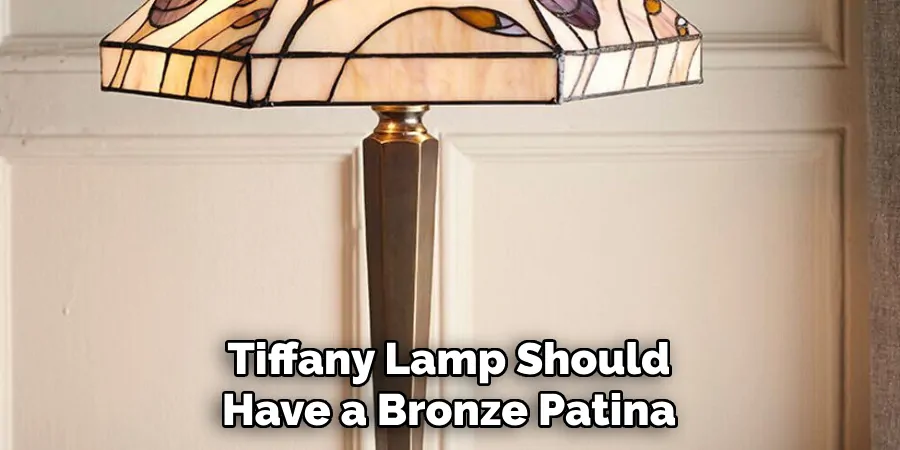
Step 4: Look for Imperfections
As mentioned before, authentic Tiffany lamps will have some imperfections due to being handmade. Bubbles or uneven edges in the glass are a good sign of authenticity. If the light looks too perfect, it is likely a fake.
Step 5: Know What to Look for in the Signature
Do some research on the specific style and time period of your Tiffany lamp to know what type of signature it should have. This can help determine its authenticity.
Step 6: Familiarize Yourself with Company Markings
Along with the signature, there should be other markings such as the company name and logo and lamp model number or production date. Take note of these markings and compare them to known authentic Tiffany lamps.
Step 7: Test with a Black Light
Using a black light can help identify authentic Tiffany lamps, as the glass will glow in different colors under the light. White or blue glowing glass is a sign of a fake lamp. And if it doesn’t glow at all, it is definitely a fake.
Step 8: Ask for Documentation
Ask for any documentation from the seller, such as certificates of authenticity or previous sales records. If they cannot provide any, be cautious about the authenticity of the lamp. Further inspection may be needed.
Step 9: Consult an Expert
If you are still unsure about the authenticity of your Tiffany lamp, it is best to consult with an expert. They can provide a professional opinion and authenticate the piece for you. If possible, bring the lamp to them for a thorough examination.
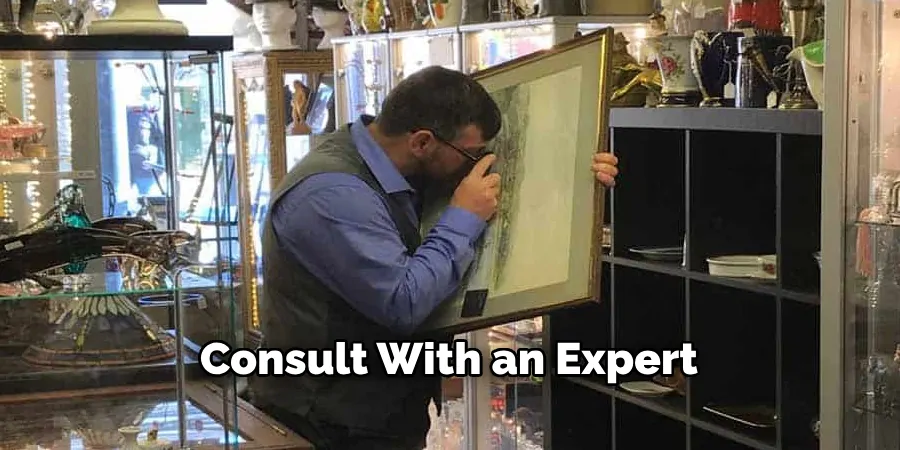
Step 10: Compare to Known Authentic Lamps
Compare your lamp to known authentic Tiffany lamps of similar style and time period. This can help you spot any discrepancies or inconsistencies in design, markings, or signatures. While not foolproof, it can provide additional evidence of authenticity.
Step 11: Trust Your Instincts
If something feels off or doesn’t seem quite right about the lamp, trust your instincts. It’s better to be cautious and do more research rather than risk purchasing a fake Tiffany lamp. If in doubt, seek the opinion of an expert.
Step 12: Do Not Rely on Price
Just because a lamp has a high price tag does not automatically make it authentic. Fake Tiffany lamps can sell for just as much as real ones, so do not rely solely on price to determine authenticity. Follow these steps and trust your own judgment before making a purchase.
So next time you come across a beautiful Tiffany lamp, you’ll know exactly how to tell if it’s the real deal or not. Let these steps on how to tell a real Tiffany lamp be your guide in determining the authenticity of this iconic piece of art.
8 Things to Avoid When Buying a Tiffany Lamp
1) No Documentation
If the seller cannot provide any form of documentation, be cautious about its authenticity. This is especially important when purchasing from an antique dealer or private seller. But even if buying from a reputable dealer, always ask for documentation to ensure the authenticity of the lamp.
2) No Imperfections
Authentic Tiffany lamps will have some imperfections due to being handmade. Bubbles or uneven edges in the glass are a good sign of authenticity. If the lamp looks too perfect, it is likely a fake. If possible, inspect the lamp in person before making a purchase.

3) Too Good to Be True Price
If a Tiffany lamp is being sold for an extremely low price, it’s most likely a fake. The value of these lamps has only increased over time, so be wary of any deals that seem too good to be true. As mentioned before, do not rely solely on price to determine authenticity.
4) Wrong Materials
Tiffany lamps are made from bronze and stained glass. If the lamp is made from different materials or looks too new, it is likely a fake. Be sure to check both the shade and base for the correct materials and patina.
5) No Signature or Markings
Authentic Tiffany lamps will have a signature and other company markings. If the lamp does not have these, it is most likely a fake. And if there are markings but they do not match known authentic lamps, that is also a red flag.
6) Too Many Available
If the seller has multiple identical or similar Tiffany lamps for sale, be cautious. Authentic Tiffany lamps are rare and highly sought after, so it is unlikely for a seller to have multiple in stock. This could be a sign of mass production or counterfeiting.
7) A Rushed Sale
If the seller is pressuring you to make a quick decision or purchase, consider this a red flag. Take your time and do your research before making a purchase. A legitimate seller will understand and allow you to take the time to make an informed decision.
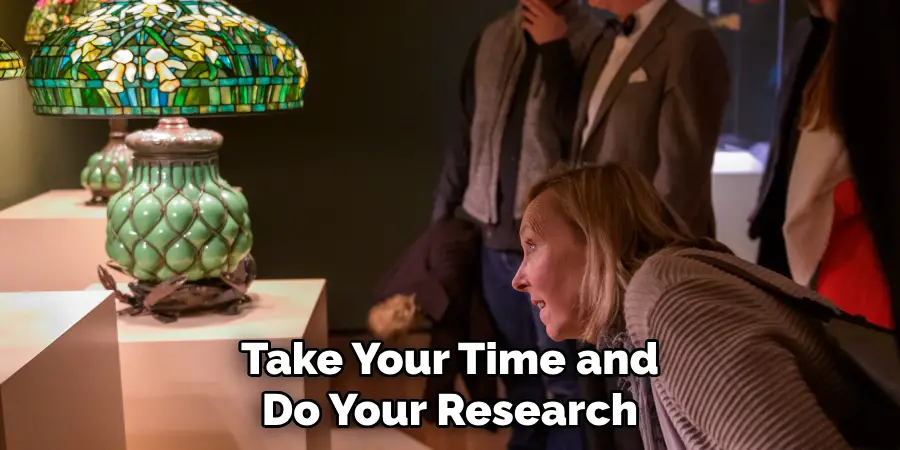
8) No Expert Opinion
If in doubt, always consult with an expert before making a purchase. They can provide a professional opinion and authenticate the piece for you. If possible, bring the lamp to them for a thorough examination. Trusting your own instincts is important, but it never hurts to have a professional opinion as well.
Remember these tips on how to tell a real Tiffany lamp, and be cautious when purchasing a Tiffany lamp to ensure you are buying an authentic piece of history. With proper research and inspection, you can confidently add a beautiful and valuable Tiffany lamp to your collection.
8 Additional Tips for Authenticating Tiffany Lamps
1) Study the Signature
Authentic Tiffany lamps will have a signature that is unique and consistent with other known authentic lamps. Look for any differences in font, size, or placement, as this could be a sign of a fake. As mentioned before, also compare the signature to known authentic lamps of similar style and time period.
2) Check the Quality of Glass
Tiffany lamps are known for their high-quality stained glass. Look for any variations in color or texture, as well as any signs of discoloration or fading. If the glass looks cheap or too perfect, it is likely a fake. Also, authentic lamps will have a slight glow when lit, while fake ones may not.
3) Look for the “Favrile” Mark
“Favrile” is a term used by Tiffany to describe their iridescent glass. Some lamps may have this word etched or stamped onto the base or shade. While not all authentic lamps will have this marking, it can be a good indicator of authenticity.
4) Inspect the Base
The base of a Tiffany lamp is just as important in determining its authenticity. The base should be made from bronze and have a dark patina. If the base looks too shiny or has no patina, it is likely a fake.
5) Know the Time Period
Tiffany lamps were produced in different styles and designs over the years. Familiarize yourself with the different time periods and what features were popular during each one. This can help you spot any inconsistencies or anachronistic elements in a lamp.
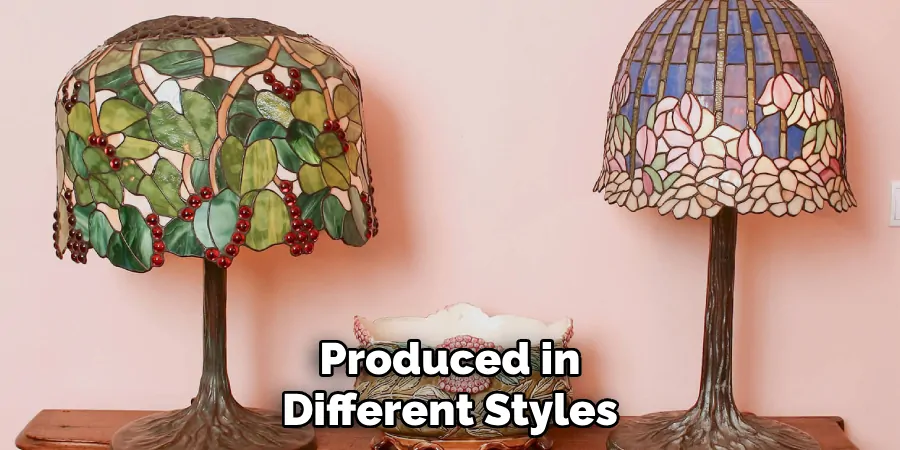
6) Look for Maker’s Marks
Along with the signature, authentic Tiffany lamps may also have maker’s marks such as the initials “LCT” for Louis Comfort Tiffany or “Tiffany Studios New York.” These marks can also help determine the time period in which the lamp was made.
7) Beware of Newly Discovered Lamps
Be cautious when purchasing a newly discovered Tiffany lamp. While it may seem like a rare find, there have been cases where these discoveries turned out to be fakes. Do your research and consult with experts before making a purchase.
8) Trust Your Gut
If something seems off or too good to be true, trust your instincts. After doing proper research and inspection, if you still have doubts about the authenticity of a Tiffany lamp, it’s better to walk away from the purchase than risk buying a fake. There will always be other opportunities to find an authentic lamp. Remember to always prioritize authenticity over a good deal.
Frequently Asked Questions About Authenticating Tiffany Lamps
Are There Any Modern Reproductions of Tiffany Lamps That Are Considered Authentic?
Yes, there are some modern companies that produce high-quality reproductions of Tiffany lamps using the same techniques and materials. These lamps can still be considered authentic as long as they are clearly marked as reproductions. However, be cautious when purchasing from third-party sellers and always verify the authenticity with the company.
Are There Any Online Resources for Authenticating Tiffany Lamps?
Yes, there are many online resources available for authenticating Tiffany lamps. These include expert websites, forums, and auction house databases that can provide information on known authentic lamps and common signs of fakes. It’s also helpful to join online communities of Tiffany lamp collectors and enthusiasts for advice and support.
What Should I Do if I Suspect a Fake Tiffany Lamp?
If you suspect that a Tiffany lamp is fake, do not confront the seller. Instead, seek out an expert opinion or report it to authorities if fraudulent activity is suspected. Remember to always prioritize your safety and well-being when dealing with potentially fraudulent sellers.
In conclusion, purchasing an authentic Tiffany lamp requires thorough research and careful inspection. With these tips and resources, you can confidently navigate the market and add a beautiful piece of history to your collection. So go forth and find the perfect Tiffany lamp for your home or collection!
Conclusion
In conclusion, purchasing an authentic Tiffany lamp requires diligence and careful consideration. It is important to do thorough research, inspect the lamp in person if possible, and consult with experts before making a purchase. Remember to always trust your instincts and prioritize authenticity over a good deal.
With these tips on how to tell a real Tiffany lamp and resources, you can confidently navigate the market and add a beautiful piece of history to your collection. So go forth and find the perfect Tiffany lamp for your home or collection!

